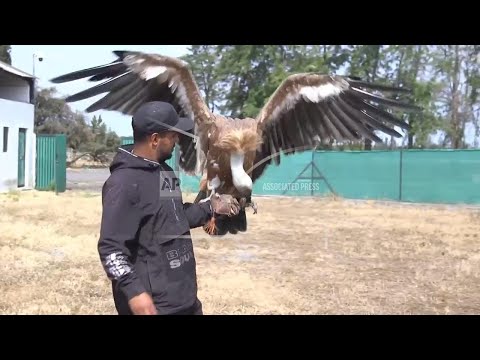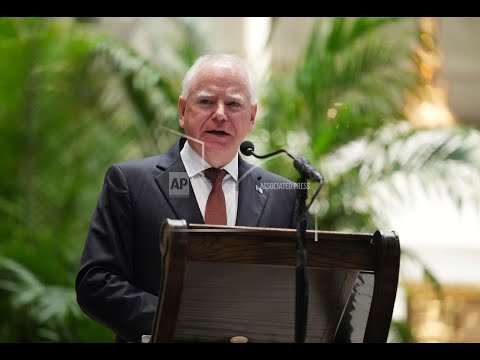(8 Jun 2025)
MOROCCO RAPTORS CENTER
SOURCE: ASSOCIATED PRESS
RESTRICTION SUMMARY:
LENGTH: 4:33
ASSOCIATED PRESS
Bir Lahmer, Sale province, Morocco – 4 June 2025
1. An injured black kite suffering from broken wings taken out of cage
2. Various of specialists and officials checking bird, talking
3. SOUNDBITE (French) Karim Rousselon, chairman of the Moroccan Association for the Protection of Raptors (AMPR):
"The main objective (of the center) is to rescue birds of prey, raptors, nationwide, whether they’ve been injured, weakened or poisoned, in order to treat them and eventually return them to the wild. The second objective of this center is to contribute to the conservation of endangered species, such as the Egyptian vulture, of which only about 25 breeding pairs remain in Morocco."
4. Various birds of prey in enclosures
5. Rousselon and others looking at screen, following the journeys of some previously freed birds
6. SOUNDBITE (Arabic) Mohamed Bouamama, head of the wildlife unit at the National Agency for Water and Forests:
"The work is coordinated between the field units of the National Agency for Water and Forests — especially the wildlife units — and members of the association to mainly rescue these birds, care for them, monitor their recovery and return them to their natural habitat. We also run awareness campaigns about the role raptors play in maintaining ecological and natural balance."
7. Various of black kites in enclosure
8. A black kite being released by bird keeper
9. Bird on tree
10. Specialists watching
11. Bird flying
12. SOUNDBITE (French) Karim Rousselon, chairman of the Moroccan Association for the Protection of Raptors (AMPR):
"In terms of outcomes, we’ve found that about one-third of the birds we take in can be released back into the wild, thanks to veterinary treatment and rehabilitation. Another third, unfortunately, can’t be released due to lasting physical or psychological impairments. These birds are kept at the center, where we try to give them a second life — either by including them in captive breeding programs or by using them for educational purposes. And sadly, in some cases, as a last resort, we do have to euthanize certain individuals."
13. Vulture spreading its wings then flying away
14. Bird keeper feeding vulture
15. Various of bird keeper training a black kite
16. Various of entrance of center, sign, reading (Arabic/French) "Bird of Prey Care Center of Bir Lahmer"
STORYLINE:
At this rehabilitation center in Morocco, specialists care for around a hundred birds of prey each year.
They help protect many of the 43 raptor species found in the country, treating injured birds and preparing them for return to the wild.
Little known to the public, the Bird of Prey Care Center in Bir Lahmer, northeast of Rabat, opened in 2011.
Created through a partnership between the National Agency for Water and Forests (ANEF) and the Moroccan Association for the Protection of Raptors (AMPR), the facility includes a park, several aviaries and a treatment unit.
The agency, which operates nationwide, is responsible for recovering injured or sick birds through its network across the country, while the association oversees their care, housing, and rehabilitation—providing necessary medical treatment before releasing them back into the wild once recovered.
"In terms of outcomes, we’ve found that about one-third of the birds we take in can be released back into the wild, thanks to veterinary treatment and rehabilitation," said Karim Rousselon chairman of the Moroccan Association for the Protection of Raptors (AMPR).
Find out more about AP Archive: http://www.aparchive.com/HowWeWork
Twitter: https://twitter.com/AP_Archive
Facebook: https://www.facebook.com/APArchives
Instagram: https://www.instagram.com/APNews/
You can license this story through AP Archive: http://www.aparchive.com/metadata/youtube/19b7fdfb34c74e65bc4a6c2ee30b2d2e
Author: AP Archive
Go to Source
News post in June 13, 2025, 3:05 pm.
Visit Our Sponsor’s:
News Post In – News





